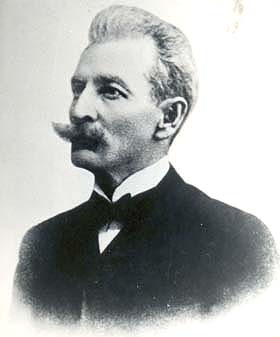3.4.3 The political and historical work of Manuel Sanguily (1848 – 1925)

Manuel Sanguily’s oratorical activity during the war and interwar periods was complemented by his work as a revolutionary journalist, in which he advocated not only for independence but also for an advanced model of democratic society.
His texts about the jungle began to be published in “El boletín de la guerra” (The War Bulletin), “La estrella solitaria” (The Lone Star), and “La independencia” (Independence), which were published in New York. Most of these appeared signed under the pseudonym Otto.
After the Pact of Zanjón, he continued publishing political texts, although at times overcome by the prevailing social immobility and the tendency toward autonomism. In 1892 and 1893, he published the journal “Hojas literarias,” which he conceived entirely and served as a platform for his talents as a political, historical, and literary polemicist.
In essence, he had not relinquished his core independence sentiment, now in a more polished style, while also clearly mastering the nuances and tones of the language. In 1895, he settled in the United States, where he continued to develop his propaganda work and fostered the anti-imperialist ideology that characterized his public activities during the Republic.
The journalistic career that began in the colonial era continued after the establishment of the Republic. His texts appeared in various publications, such as: El Triunfo, Heraldo de Cuba, La Habana Literaria, El País, El Libre Pensamiento, Revista de Cuba and Revista Cubana, Cuba Contemporánea, Revista Bimestre Cubana, Magazine of the Faculty of Letters and Sciences of the University of Havana, among others.
From a historiographical perspective, he was a member of the Cuban Academy of History and wrote texts that, from a perspective more essayistic than academic, contain insightful analyses of colonialism in Cuba and the situation in the Americas. He offers a definition, both synthetic and lyrical, of the essence of history as a reality rather than a scientific discipline:
“History is the perpetual effort of the spirit against form, the eternal reproduction of the bird that breaks the egg demanding a better existence, and institutions are the molds of societies, which harden and oppress, which disfigure and kill, which sometimes become narrow, because they age while societies are renewed, and which, for this very reason, must change in step with them, if violence and pain are to be avoided; they must be modified in time, so that they are not shattered by the explosion of the revolution.”








